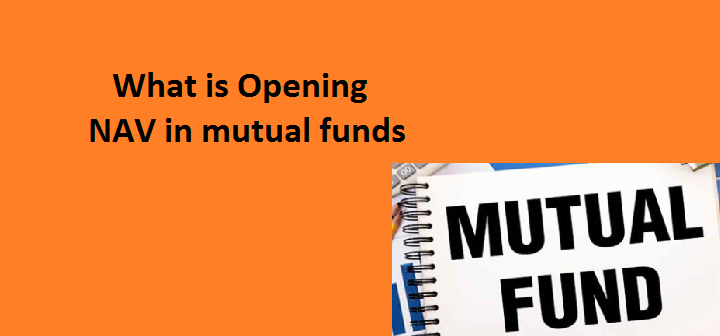What is Opening NAV in Mutual Funds?

The opening NAV is the first value that is disclosed for a mutual fund. It is a form of value-added tax (VAT) that the SEBI requires fund companies to report to investors. This number is used to calculate the annual operating expense (OPE) of a fund. A continuously traded mutual funds allows investors to buy and sell units continuously, and the first NAV that is disclosed is called the opening NAV. It also refers to the clearing day, which is the day on which a clearinghouse pays securities to its members.
NAV in Mutual Funds:
The opening NAV for a mutual fund is a graphical representation of the NAV. It is also used to compare different mutual funds. Its graphical representation of the NAV makes it easy to understand and compare various funds. It is important to remember that the closing NAV will vary from day to day. For this reason, it is important to understand the differences between the two. To better understand the difference between the two, consider the following example.
If a mutual fund’s NAV is $200 million, and it has 1 million shares in issue, then the value of each share will fluctuate between the opening NAV and the closing NAV. In this example, an investor invests $40 million and receives 200,000 shares. This investment instantly increases the NAV of the fund, and the fund can then invest the money. The investor will receive one-sixth of its value upon withdrawal.
NAV in Mutual Funds:
The opening NAV of mutual funds depends on the fund’s maturity date. If funds are transferred before 1.30 pm on a particular day, the NAV of the previous day will be applied to the investment. Otherwise, the NAV of the next day will be used for new investments. There are many factors that influence the price of a mutual fund, including the type of scheme and the past performance of the fund. If the investor is risk-averse, an income-bearing fund may be a better choice.
The opening NAV of a mutual fund is a crucial element in an investment. The value of a mutual fund’s underlying assets is determined by its closing price. A low NAV is not necessarily a bargain. It could be a good time to invest. When the NAV of a mutual fund is low, it is not necessarily a good investment opportunity. It could be a cheap price. However, it doesn’t mean that the fund is worth investing in.
The open-ended mutual fund (OMF) is not traded on the stock exchange. Instead, it is purchased from a fund company and is not available in the secondary market. It is traded on an exchange, and its NAV is quoted as the price paid by shareholders selling back their shares. This means that the NAV of a closed-end mutual fund is the price paid by the company to its shareholders on that day. The NAV of an open-ended fund is the same as the same-ended mutual funds.
In contrast, an open-ended mutual fund is issued by a scheduled commercial bank. The open-ended NAV is the price that the fund will earn at the end of the year. Its closing NAV is the price of the funds’ units. This value is the net asset value of an open-ended mutual fund. It is a measure of how much the company is paying in order to make a profit. It is the value of the scheme that investors are paying for.
NAV in Mutual Funds:
A mutual fund’s opening NAV is the amount of money that the fund company has spent on the fund. This figure is the value that the fund company pays for each unit. The closing NAV is the value that the company will realize. It is the price that the market price of a mutual funds listed scheme is less than the actual NAV. This value will be different for different funds. For a given stock, the market price is less than its Opening NAV.
The opening NAV is the value of the underlying assets. This value is equal to the value that the fund paid at the closing price. In a closed-end mutual fund, the NAV is the price paid for the shares that have been issued. The value is the same at the closing date of the mutual fund. If the NAV is too high, then it is a bad investment. Similarly, a low NAV does not mean the asset is cheap.




